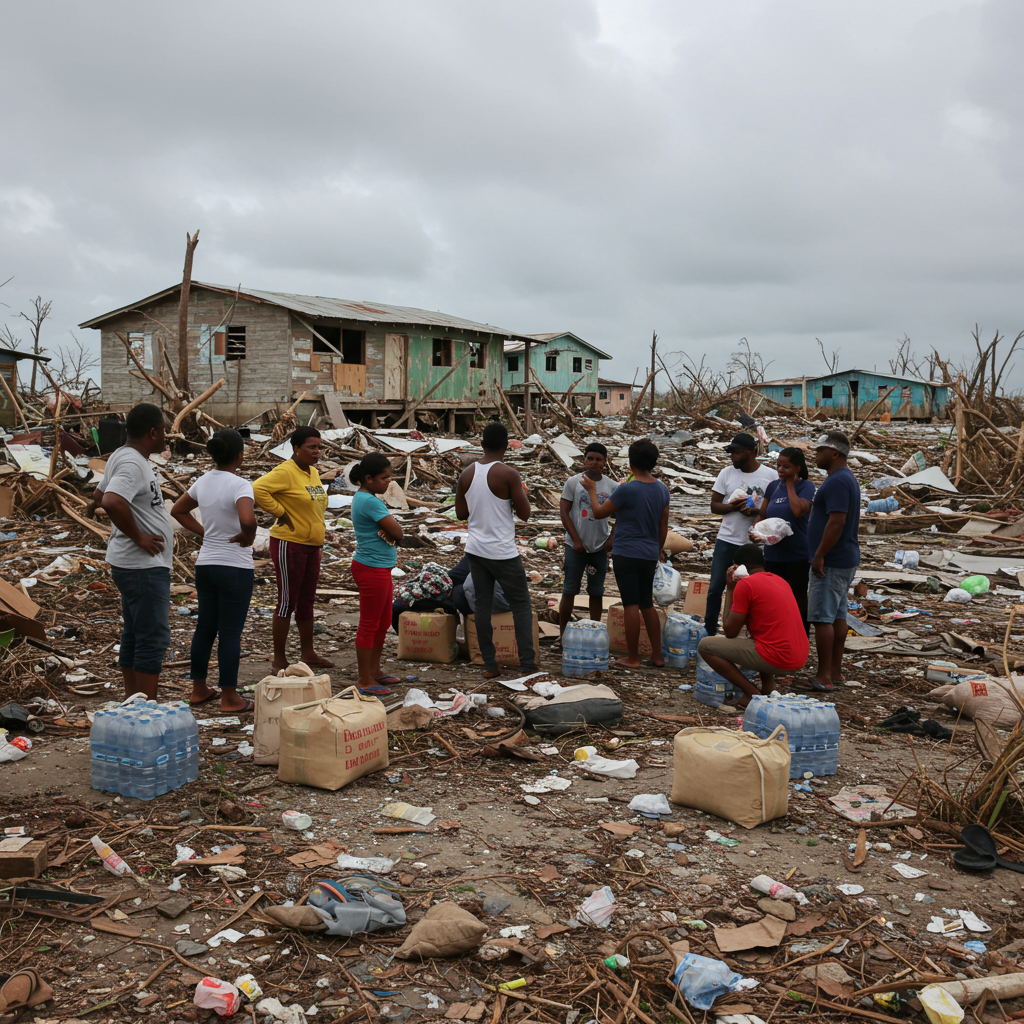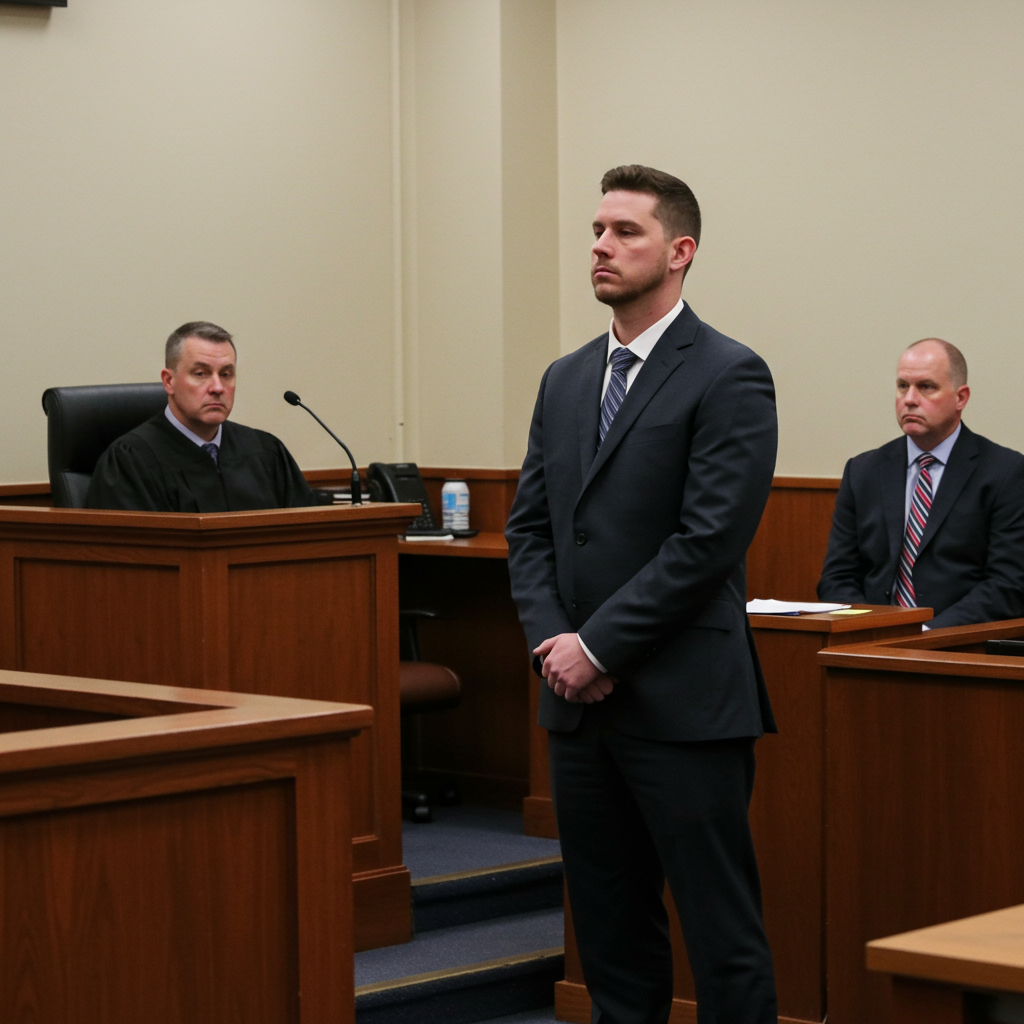Five days after Hurricane Melissa, a monstrous Category 5 storm, slammed into western Jamaica on October 28, 2025, a profound humanitarian crisis grips the island. With sustained winds reaching a terrifying 185 mph (297 km/h), Melissa became the strongest hurricane in modern Jamaican history. Today, countless residents in devastated coastal communities still desperately await vital Hurricane Melissa Jamaica aid. The plea is constant: “No help, no food, no water.” This harrowing reality underscores the immense challenges in distributing much-needed relief to isolated towns.
The immediate aftermath painted a grim picture across Westmoreland and St. Elizabeth parishes, where the storm’s eye made landfall. Homes lay in ruins, roads were impassable, and basic services vanished. The government reported a soaring death toll of at least 28 people, a figure expected to climb as officials access remote areas. Local officials confirmed 10 fatalities in Westmoreland alone. In St. Elizabeth, a staggering 90% of homes were destroyed, turning vibrant communities into desolate landscapes.
Jamaica’s Widespread Devastation and Isolation
Hurricane Melissa left an indelible mark of destruction. Miles of road stretching into Westmoreland Parish became a “graveyard of trees,” littered with twisted branches and snapped limbs. Piles of debris lined the battered roadsides, next to overturned shipping containers and buildings stripped of their roofs. This extensive damage made initial Jamaican disaster relief efforts incredibly difficult.
Many communities remained completely cut off. Residents found themselves isolated without food, power, or running water, with no clear timeline for normalcy. As of Friday, approximately 400,000 people across Jamaica were without electricity. An untold number also lost access to cell phone service and Wi-Fi, severing their connection to the outside world. This communication blackout further compounded the challenges faced by both residents and aid workers.
Voices from the Rubble: A Cry for Help
The human cost of Melissa’s fury is heartbreakingly evident in the personal stories emerging from towns like Whitehouse, a coastal commercial hub in Westmoreland Parish. Residents there expressed profound frustration over the delayed assistance. Gary Williams, who lost his entire home, lamented, “they no turn up” when referring to promised aid deliveries. He contemplated sleeping outside on his porch amidst the wreckage, having nowhere else to go.
Another anonymous woman described the situation as “horrible,” stating, “Words can’t explain the situation that we’re in. So many hopeless, helpless and lifeless people here right now.” Robert Morris, a fisherman from a tiny community near Whitehouse, saw his entire livelihood vanish. His fishing village was destroyed, his boat house “flat,” and his fishing boat “mashed up.” He echoed the desperate cry of “no help, no food, no water,” vowing to find an intact boat to continue fishing, despite uncertainty about selling his catch. The absence of basic necessities has pushed these communities to their breaking point.
Government Response Amidst Criticism and Mounting Challenges
Jamaica’s government has mobilized resources, but the scale of the disaster has overwhelmed initial efforts. Prime Minister Andrew Holness emphasized that the immediate focus was on “clearing debris, restoring essential services,” and providing crucial food and medical supplies. Transportation Minister Daryl Vaz acknowledged public criticism regarding delays, attributing them to “several factors,” including “Refuelling, Areas for Landing, Accessibility and Timing/Visibility.”
To address the severe communication breakdown, over 200 StarLink devices were strategically deployed across the island, aiming to restore internet access. However, the path to recovery is fraught with difficulty. The Health Minister, Dr. Christopher Tufton, voiced concerns about an impending health crisis, warning of increased risks from mosquito-borne and waterborne illnesses. He urged people to discard spoiled food and highlighted significant damage to hospitals, especially Black River Hospital in St. Elizabeth, which required service relocation. Reports of looting in desperate towns like Black River, where residents sought food and medicine from damaged supermarkets, underscored the growing impatience and urgency for Hurricane Melissa Jamaica aid.
Financial Pledges and Rebuilding Vision
Financially, Jamaica is leveraging various mechanisms to support recovery. Finance Minister Fayval Williams noted a record $70.8 million payout from the Caribbean Catastrophe Risk Insurance Facility (CCRIF) within 14 days, supplemented by a contingencies fund, a national natural disaster reserve, and a catastrophe bond. Prime Minister Holness affirmed a commitment to rebuild Jamaica “stronger and wiser,” with officials like Social Security Minister Pearnel Charles Jr. and Water and Environment Minister Matthew Samuda actively involved in aid deliveries and public appeals.
Unwavering Resilience: The Spirit of Jamaica Shines Through
Despite the overwhelming destruction and despair, the spirit of the Jamaican people remains unbroken. A profound sense of pride and resilience echoes across the affected areas. Roy Perry, who lost everything, articulated this determination: “we have to just keep the faith and the hope is up still.” He declared, “Can’t give up. Not gonna give up.”
Oreth Jones, a farmer whose farm was “all wrecked,” demonstrated similar fortitude. Selling the last of his salvaged produce, he expressed profound gratitude for simply being alive. Even with a fractured leg from a prior biking accident, he endured Melissa’s wrath and focused on moving forward through prayer. These stories are a testament to the indomitable optimism and unwavering strength of communities facing unimaginable adversity.
A Global Hand and Celebrity Support: Boosting Relief Efforts
As local efforts struggled, international Caribbean hurricane recovery assistance began to pour into Jamaica. The US State Department’s Disaster Assistance Response Team arrived promptly, deploying up to ten helicopters for patient transfers and aid delivery. The United Kingdom pledged £7.5 million in regional emergency aid, matching public donations to the Red Cross and Red Crescent, and organized flights to evacuate British nationals. Global Empowerment Mission also dispatched vital convoys from Kingston.
Notably, reggae and dancehall superstar Shaggy emerged as a key figure in relief operations. Using his Shaggy Make a Difference Foundation and personal resources, he swiftly mobilized aid, partnering with Florida attorney Dan Newlin to fund and coordinate four initial flights from the U.S. to Kingston. These planes were laden with critical supplies like water, canned goods, and paper towels. Shaggy strategically focused initial efforts on underserved areas like Black River and St. Elizabeth, where he observed widespread homelessness and unrecovered bodies. His efforts, relying heavily on volunteers, demonstrated the powerful synergy between external aid and community-driven response. Shaggy continues to plan larger cargo flights and a benefit concert, urging support for official channels like Food for the Poor and the Jamaican government.
The Road Ahead: Rebuilding and Addressing Climate Change
The devastation wrought by Hurricane Melissa extends beyond Jamaica’s shores. Neighboring Haiti reported at least 31 deaths alongside catastrophic flooding, while Cuba experienced unprecedented flooding from the Rio Cauto, necessitating mass evacuations. Scientists increasingly link the enhanced likelihood and intensity of such extreme weather events to human-caused climate change, making Melissa a stark reminder of island nations’ acute vulnerability.
Jamaica faces a long and arduous journey toward full recovery and reconstruction. The immediate focus remains on humanitarian assistance, restoring essential services, and rebuilding infrastructure. However, the long-term vision encompasses not just rebuilding what was lost, but also constructing a more resilient and prepared nation. The collective efforts of local communities, government agencies, and international partners will be crucial in helping Jamaica emerge stronger from this profound crisis.
Frequently Asked Questions
What was the immediate impact of Hurricane Melissa on Jamaica?
Hurricane Melissa, a Category 5 storm, caused widespread devastation upon striking Jamaica on October 28, 2025. It brought 185 mph winds, resulting in at least 28 confirmed deaths, with 10 in Westmoreland Parish alone. St. Elizabeth Parish saw 90% of its homes destroyed. The storm crippled infrastructure, leaving 400,000 people without power and many without food, water, or communication, effectively isolating numerous coastal communities.
How is aid reaching affected communities in Jamaica, and how can I contribute?
Aid distribution faces significant challenges due to blocked roads and destroyed infrastructure, leading to delays. Government efforts include deploying over 200 StarLink devices to restore internet access. International partners like the US State Department and the UK have provided relief funds and assistance, including helicopters for aid delivery. Additionally, celebrity initiatives, such as Shaggy’s Make a Difference Foundation, are flying in supplies to critical areas like Black River. To contribute, individuals are encouraged to donate to reputable organizations like Food for the Poor and the official Jamaican government relief funds.
What are the long-term recovery challenges for Jamaica after Hurricane Melissa?
Jamaica faces multifaceted long-term recovery challenges. Rebuilding homes, infrastructure, and essential services will be a massive undertaking, requiring substantial financial resources and sustained effort. The health sector anticipates a crisis from mosquito-borne and waterborne illnesses due to damaged sanitation and water systems. Livelihoods, particularly in fishing and farming, have been decimated, necessitating economic reconstruction. Furthermore, as scientists link such intense storms to climate change, Jamaica must prioritize building greater resilience against future extreme weather events to secure its future.



